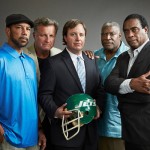Tom Cutinella’s football game Wednesday, October 1, probably began like any other. The guard/linebacker took the field amidst cheers from the crowd, ready to take on the opponent.
Everything changed during the third quarter as his team fought to keep their 17 to 12 lead. The same roaring crowd fell silent as Cutinella, a junior in high school, collapsed after a big hit with a member of the opposing team. Hours later he died in the hospital.
Head injuries in football continue to make headlines across all ages. Parents of youth football players debate whether it’s safe for their child to play in the contact sport. College players are beginning to see the risks and quitting after a few concussions. More and more retired professional players are posthumously diagnosed with CTE and current professional players are increasingly violent.
After years of denial, the National Football League (NFL) recently admitted repeated head trauma from playing can result in long-term diseases, including Alzheimer’s, ALS and CTE. In fact, the League estimates 1 in 3 players have a higher chance of developing a neurodegenerative disease than their counterparts who don’t play football.
Researchers at the Department of Veteran Affairs’ brain repository in Massachusetts found 76 of the 79 brains from former players had CTE. In another study, 128 football players donated their brains, many with suspicion they suffered from the disease. Almost 80 percent of the sample tested positive for CTE. These brains came from footballers who played at high school, college or professional levels.
CTE, or chronic traumatic encephalopathy, is the result of repeated head trauma. The brain begins the production of an abnormal protein, tau, which interrupts normal brain function before eventually killing the cells. Symptoms range from depression to dementia. It changes the mind of its victim.
About two years ago, Jovan Belcher, a former Kansas City Chief, killed his girlfriend and then shot himself in front of the teams’ then trainer and coach. His autopsy revealed the presence of CTE. Former Steeler and Hall of Famer Mike Webster was completely unrecognizable before he died of a heart attack at age 50.
Many are now connecting the NFL’s concussion issues to its domestic violence issues. While the two cannot be definitively paired, research confirms the longer someone plays, the heightened chance of long-term brain injury, which leads to bouts of rage and increased aggression.
These potential problems begin young, as the NFL helps fund youth football programs with a reported $45 million per year. Heads Up USA tries to teach proper tackling to reduce the risk of traumatic brain injury, but there’s no research that supports a different style of tackling is any safer.
Football is an American pastime, but it’s cutting too many lives short. How much longer can football as we know survive?
[This post originally appeared on gpwlaw.com]
Footnotes
Breslow, J. M. (2014). 76 of 79 deceased NFL players found to have brain disease. PBS. [Link]
Dowdy, Z. R. et. al. (2014). Tom Cutinella, Shoreham-Wading River HS football player, dead after injury in game, authorities say. Newsday. [Link]
Draper, B. (2014). Autopsy shows Chiefs LB Belcher had CTE damage. Yahoo Sports. [Link]
Jenkins, S. (2014). NFL must pay for its handling of concussion issues- or Congress should intervene. The Washington Post. [Link]
 Thank you to Michael Sokolove for writing such a powerful piece about the long road to making a settlement from the NFL a reality.
Thank you to Michael Sokolove for writing such a powerful piece about the long road to making a settlement from the NFL a reality.